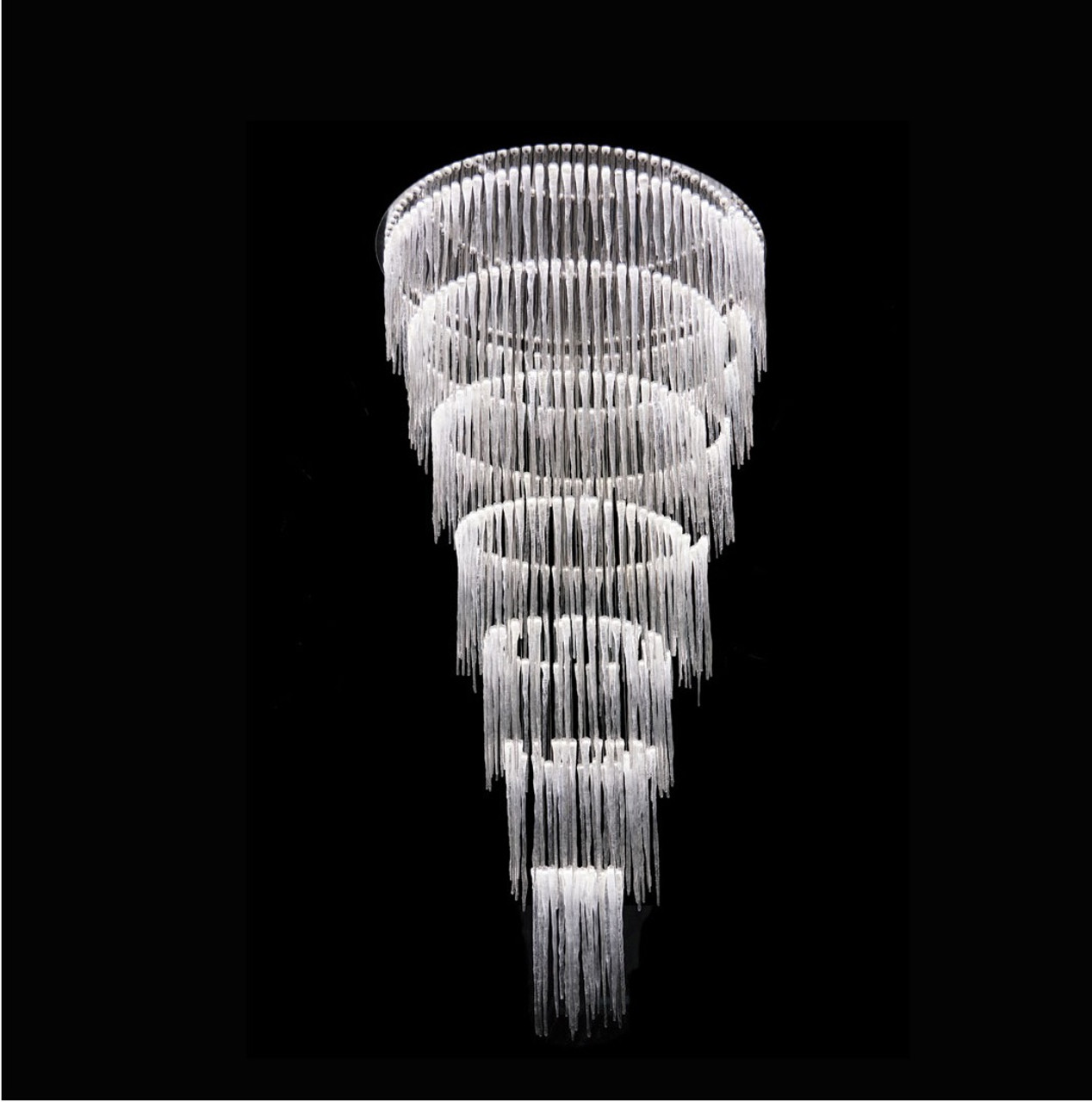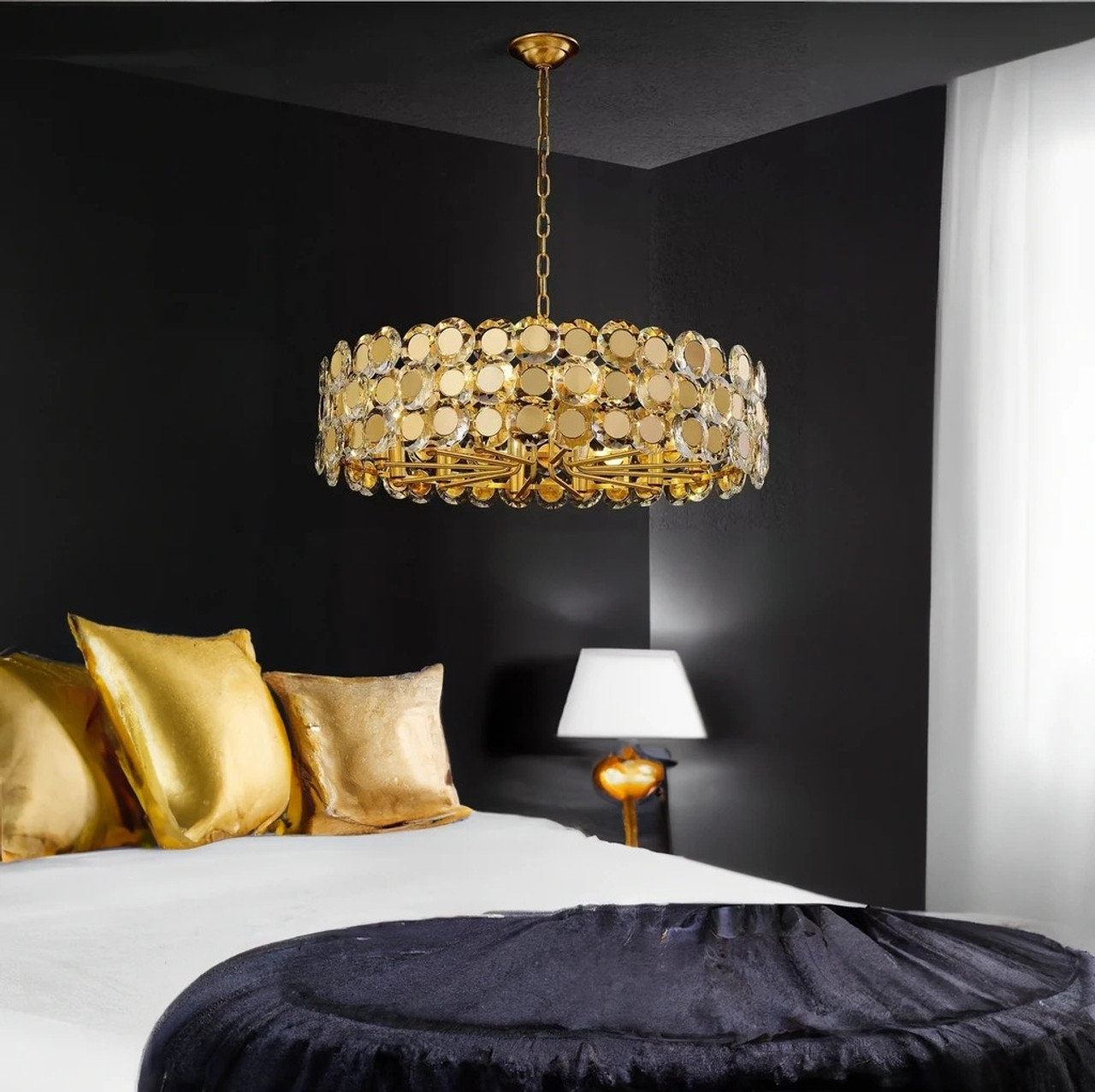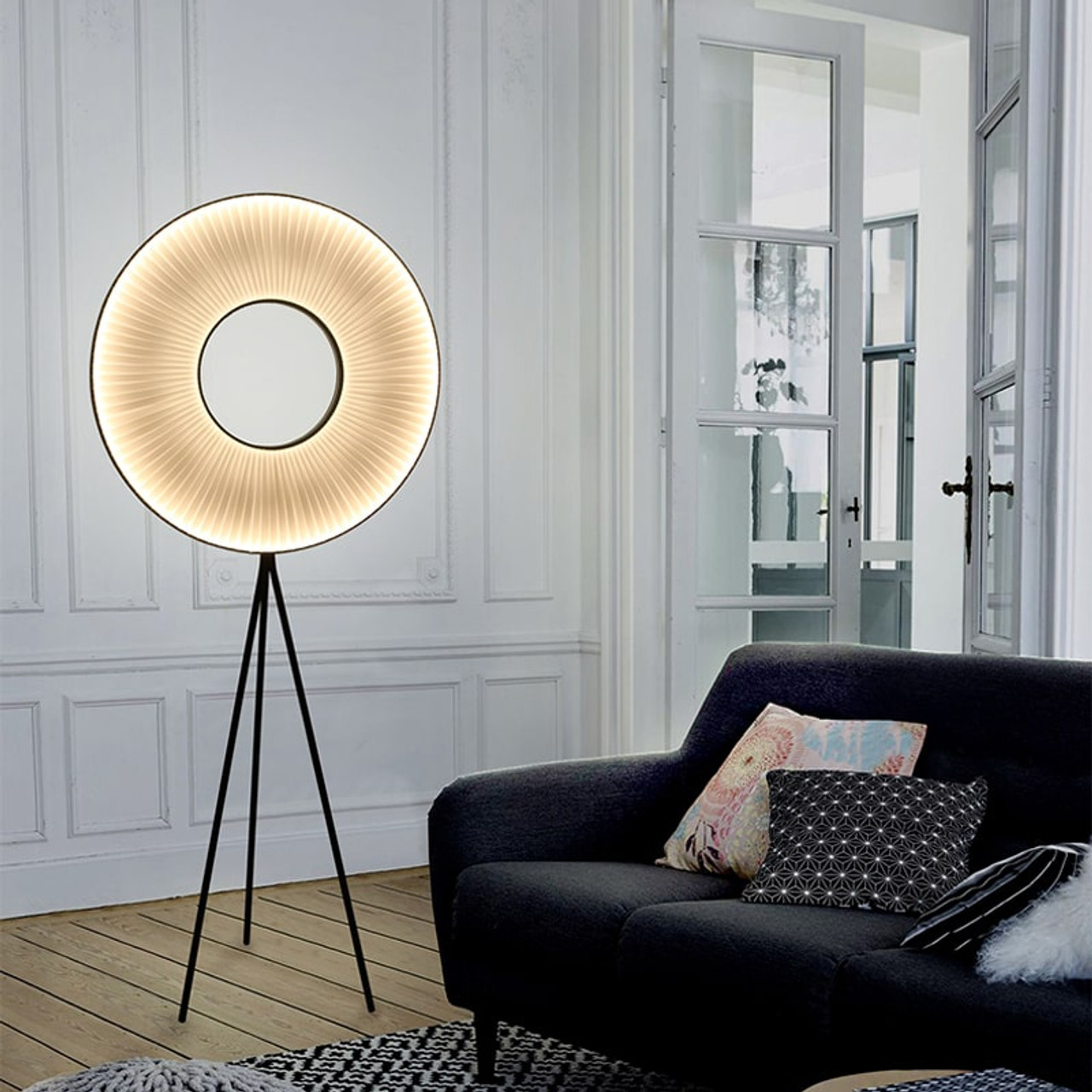How does lighting play a role in interior design?
Aug 01, 2024
How does lighting play a role in interior design?
To answer the question how does lighting play a role in interior design - Lighting plays a crucial role in interior design for several reasons:
1. Mood Setting: Different lighting can create different moods within a space. Soft, warm lighting can create a relaxed, intimate atmosphere, while bright, cool lighting can make a space feel energic and vibrant. The right lighting can set the tone of the room.
2. Highlighting Features: Lighting can be used to draw attention to particular elements within a room, such as artwork, architectural features, or even a favorite piece of furniture. Spotlights, track lighting, or accent lamps can be used for this purpose.
3. Functionality: Good lighting is essential for functionality. For example, task lighting is used in areas where more intensive light is required, like under-cabinet lights in a kitchen or a reading lamp in a living room.
4. Perceived Space: Lighting can affect how big a room feels. A well-lit room often feels more spacious, while a dimly lit room can feel smaller and cozier.
5. Aesthetic Appeal: Beyond functionality, lighting fixtures themselves can contribute to the aesthetic of a room. A striking chandelier or a unique table lamp can serve as a focal point.
6. Colour Perception: Lighting can dramatically change the way colours look. For example, a room painted a warm colour might look very different under cool, blue-toned lighting compared to warm, yellow-toned lighting.
By carefully considering lighting in an interior design plan, you can create a space that not only looks good but also functions well for its intended use. From the colour of the light bulbs used to the style and placement of the lighting fixtures, every aspect of lighting should be thoughtfully considered to create a balanced, comfortable, and aesthetically pleasing space.
Lets delve into a detailed look at these elements
Mood Setting:
Mood-setting lighting refers to the strategic use of light to evoke a particular emotional response or ambiance in a space. The intensity, colour, direction, and source of light can all influence the mood of a room. Here's a deeper look:
1. Intensity: Bright, intense light can stimulate activity and alertness, making it suitable for a workspace or kitchen. On the other hand, low-intensity lighting can create a calm, intimate, and relaxed atmosphere, perfect for bedrooms or living areas.
2. Colour: The colour temperature of the light can also affect the mood. Warm light (with a yellowish hue) tends to create a cozy, inviting atmosphere, while cool light (bluish) can evoke a more energetic, vibrant, or serene ambiance.
3. Direction: The direction of the light also impacts the mood. Downlighting can create dramatic shadows and a focused environment, while uplighting can make a room seem more spacious and relaxed.
4. Source: The source of the light plays a role too. Ambient light provides a general, overall illumination. Task lighting focuses on specific areas for activities like reading or cooking. Accent lighting highlights particular architectural or decor features, adding depth and dimension to a space.
5. Variability: Being able to adjust the lighting depending on the time of day, the activity, or the desired ambiance is important for mood setting. This is where dimmer switches, smart lights, or multiple light sources come into play.
6. Lighting Fixtures: The style of the lighting fixture itself can also contribute to the mood. For example, a chandelier might add a touch of elegance and formality, while a modern pendant light could contribute to a minimalist or contemporary ambiance.
In summary, mood-setting lighting is all about choosing and controlling your light sources in a way that supports the function of a space and enhances its aesthetic appeal.
Highlighting Features:
Highlighting features in interior design through lighting involves the strategic use of light to draw attention to specific elements in a space. This technique can enhance the visual interest and aesthetic appeal of a room. Here are several ways in which lighting can be used to highlight features:
1. Accent Lighting A: This is the most common type of lighting used to highlight features. Accent lights, such as spotlights, track lights, or directional recessed lights, are positioned to focus light on a particular area or object, such as artwork, architectural features, or a statement piece of furniture.
2. Layered Lighting: Layering different types of light can also help highlight specific features. For example, using ambient lighting for general illumination, task lighting for specific functions, and accent lighting to draw attention can create a well-balanced and dynamic lighting scheme.
3. Positioning and Direction: The positioning and direction of the light can dramatically impact how a feature is highlighted. For instance, uplighting can be used to emphasize a tall plant or a beautiful ceiling, while downlighting can be used to highlight a dining table or a kitchen island.
4. Contrast: Creating contrast can effectively highlight a feature. For instance, if most of a room is lit with warm light, a cool light shining on a piece of art can make it stand out.
5. Lighting Fixtures: The design of the lighting fixture itself can contribute to the highlighting effect. A unique or statement light fixture can draw attention not only to the light it provides but also to the fixture itself.
6. Colour and Temperature: The colour and temperature of the light can impact how a feature is perceived. For example, warm light can enhance the richness of wood furniture, while cool light can highlight the sleekness of metallic or glass features.
By thoughtfully considering these factors, lighting can be used effectively to highlight the best features of an interior space, enhancing its overall aesthetic and creating focal points that guide the eye around the room.
Functionality:
Functionality is a key aspect to consider when planning the lighting in interior design. It involves ensuring the lighting serves the practical needs of the space effectively. Here's how functionality comes into play:
1. Task Lighting: This type of lighting is essential in areas where specific tasks are performed. For example, in a kitchen, under-cabinet lighting can provide illumination for food preparation. A desk lamp in a home office, a reading lamp by a cozy chair, or well-lit vanity mirrors in a bathroom all serve specific tasks.
2. Ambient Lighting: This provides overall illumination for the space, allowing people to move safely and comfortably through the room. Ceiling fixtures, chandeliers, recessed lighting, or floor lamps can serve this purpose.
3. Accent Lighting: While often used for aesthetic purposes, accent lighting can also add to the functionality of a space by highlighting specific areas or objects, making them easier to view. This can be especially important in spaces that display artwork or other significant features.
4. Safety Lighting: In certain areas, lighting is crucial for safety. For instance, stairways should be well-lit to prevent falls. Outdoor areas, such as walkways or entranceways, also need good lighting for safe navigation.
5. Layered Lighting: A functional lighting plan often involves layering different types of lighting—ambient, task, and accent—to ensure all areas of the room are well-served. Having multiple sources allows you to adjust the lighting as needed.
6. Control: Part of functional lighting design is the ability to control the lighting levels. This could involve using dimmer switches, or smart lighting systems that can be adjusted in terms of colour, brightness, and even direction.
7. Energy Efficiency: Functionality also extends to energy use. LED lights, for instance, provide excellent light quality and consume less energy. They also last longer, reducing the need for frequent bulb changes.
By considering functionality in lighting design, you ensure that the space is not only beautiful but also serves its intended purpose efficiently.
Perceived Space:
Lighting can dramatically impact the perception of space within an interior design context. It can make a room feel larger or smaller, alter the atmosphere, and change the way we perceive colours and textures. Here's a deeper look into how lighting affects perceived space:
1. Brightness and Space Perception: A well-lit room tends to feel more spacious and open, while a darker room can feel smaller and more intimate. This can be used strategically in interior design. For example, a small room with ample natural light and additional bright, artificial light can feel larger, while a large room with dimmer lighting can feel cozier and more inviting.
2. Direction of Light: The direction from which light is cast can also influence the perceived size of a room. Downlights can make a room feel smaller and more focused, while uplighting can make a space seem larger and more expansive. Sideways lighting can elongate a room, making it seem wider or longer.
3. Highlighting Architectural Features: Lighting can be used to draw attention to or away from certain architectural features. For instance, if a room has high ceilings, lighting the upper parts of the walls can emphasize the height and make the room feel larger.
4. Shadow and Depth: Lighting can create shadows that add depth to a space, making it seem more dimensional and spacious. For example, accent lights that highlight certain objects or areas can create appealing contrasts of light and shadow.
5. Color Temperature: The color temperature of the lighting can also affect perceived space. Cooler, blue-toned lights can make a space feel larger and more open, while warmer, yellow-toned lights can make a space feel smaller and cozier.
6. Reflective Surfaces: In rooms with reflective surfaces, such as mirrors or glossy finishes, lighting can create reflections that enhance the perception of space, making the room appear larger.
By strategically using lighting, interior designers can manipulate the perceived space within a room, making it feel more comfortable, spacious, or intimate depending on the desired effect.
Aesthetic Appeal:
Aesthetic appeal is a major aspect to consider when designing the lighting of an interior space. It pertains to how lighting contributes to the overall look and feel of a room, complementing its decor and architecture. Here are several ways in which lighting enhances aesthetic appeal:
1. Highlighting Architecture and Decor: Lighting can be used to draw attention to particular architectural features or pieces of decor. For example, accent lights can be used to highlight a piece of artwork, a beautiful mantel, or a textured wall.
2. Creating Mood: The lighting in a room can dramatically alter its mood. A softly lit room can feel cozy and intimate, while a brightly lit room can feel energetic and lively. The colour of the light also affects the mood: warm light tends to feel more relaxing, while cool light feels more refreshing.
3. Enhancing Colour: Lighting can dramatically alter the way colors appear in a room. Warm light can make reds, oranges, and yellows more vibrant, while cool light can enhance blues and greens.
4. Adding Drama: The contrast between light and shadow can add a sense of drama to a room. This can be achieved through various techniques such as downlighting, uplighting, or using spotlights or accent lights.
5. Lighting Fixtures: The lighting fixtures themselves also contribute to the aesthetic appeal of a room. A beautiful chandelier, an antique table lamp, or a modern floor lamp can serve as a piece of decor in its own right.
6. Layering: A well-designed room usually incorporates layers of lighting — ambient, task, and accent. This creates a visually interesting and flexible lighting scheme, allowing different aspects of the room to shine at different times.
7. Creating Cohesion: Lighting should complement the overall design style of the room, creating a cohesive look. For example, in a minimalist modern room, sleek, clean-lined lighting fixtures would be appropriate, while in a rustic farmhouse room, a wrought-iron chandelier might be a better fit.
By considering all of these elements, designers can use lighting to enhance the aesthetic appeal of a space, creating rooms that are not only functional but also beautiful and inviting.
Colour Perceptions:
Colour perception in interior lighting design involves understanding how different types of light affect the way we perceive the colours in a room. Light can dramatically alter the appearance of wall colours, furniture, and other design elements. Here's how colour perception comes into play:
1. Colour Temperature: The colour temperature of a light bulb can make colours appear differently. Warm light (with a yellowish hue) can enhance warm colours (reds, oranges, yellows) and mute cool colours (blues, greens). Cool light (with a bluish hue) can make cool colours appear more vibrant and can slightly dull warm colours.
2. Natural vs. Artificial Light: Natural light tends to render colours most accurately. As the natural light changes throughout the day, colours can shift from warm to cool. Artificial light, depending on its source, can also significantly alter the perception of colour. For example, incandescent bulbs produce warm light, while fluorescent light is usually cooler.
3. Intensity: The brightness of a light source can affect colour perception. Bright light can wash out colours, making them appear paler, while dim light can make colours seem darker and richer.
4. Direction of Light: The direction from which light hits an object can impact the perceived colour. Shadows and highlights can alter the appearance of colour and create depth and texture.
5. Reflection and Absorption: Light can be absorbed or reflected, depending on the colour and material of a surface. Dark colours absorb more light, so they might appear darker under low light conditions, while light colours reflect more light, appearing brighter under the same conditions.
6. Lighting Fixtures: The colour and material of a lighting fixture can also impact colour perception. A fixture with a coloured shade, for example, will cast a tinted light that alters the colours in a room.
In summary, lighting is a crucial factor in how colours are perceived in an interior space. To achieve the desired look and feel, designers often experiment with different light sources, fixtures, and brightness levels and consider these factors when choosing paint colours and other materials.




